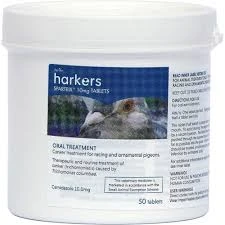
Dec . 05, 2024 07:23 Back to list
Salpingitis in Chickens and Reliable Suppliers for Treatment Solutions
Understanding Salpingitis in Chickens A Guide for Suppliers
Salpingitis, an inflammation of the hen's oviduct, is a significant concern for poultry suppliers and farmers alike. This condition not only affects the health of the birds but also has substantial implications for overall egg production and quality. Understanding the causes, symptoms, treatment, and prevention strategies for salpingitis is essential for suppliers working in the poultry industry.
Causes of Salpingitis
Salpingitis can be caused by various factors, primarily bacterial infections. Common pathogens associated with this condition include Escherichia coli, Salmonella, and Mycoplasma. These bacteria can enter the hen’s oviduct through different routes, such as through the cloaca or via an ascending infection from the reproductive tract. Poor management practices, including suboptimal sanitation, excessive stress, and inadequate biosecurity measures, can exacerbate the risk of salpingitis.
Environmental factors also play a critical role. Hens raised in overcrowded or unclean conditions are more susceptible to infections. Additionally, nutritional deficiencies, particularly a lack of vitamins and minerals essential for immune function, can contribute to the development of salpingitis. Understanding these causative factors allows suppliers to implement better practices for livestock management.
Symptoms of Salpingitis
Identifying salpingitis in chickens requires vigilance and awareness of the common symptoms. Affected hens may exhibit irregular laying patterns, including a decrease in egg production or the production of abnormal eggs (e.g., misshapen or soft-shelled eggs). Other observable signs include swelling of the abdomen, lethargy, and a lack of appetite. In severe cases, the presence of a discharge from the vent may indicate an underlying infection.
It's important for poultry suppliers to train their staff to recognize these symptoms early. Early detection can lead to prompt treatment, which can mitigate the impact on flock health and productivity.
Treatment Options
Once salpingitis is diagnosed, treatment options may vary based on the severity of the condition and the specific pathogens involved. Veterinarians typically recommend antibiotics to combat bacterial infections. However, it’s crucial to use these medications judiciously to avoid the development of antibiotic-resistant strains.
salpingitis chickens supplier

In addition to antibiotic therapy, supportive care is essential. This may include ensuring that the affected hens stay hydrated and providing them with a balanced diet rich in essential nutrients. In some cases, surgical intervention may be necessary to remove infected tissue or abscesses.
Prevention Strategies
Prevention is the best course of action when it comes to managing salpingitis in poultry flocks. Suppliers can implement several effective strategies
1. Biosecurity Measures Adopting strict biosecurity protocols can help minimize the risk of infection. This includes isolating new birds before introducing them to existing flocks, maintaining cleanliness in coops, and controlling the movement of personnel and equipment.
2. Proper Nutrition Ensuring hens receive a balanced diet that includes vitamins and minerals essential for reproductive health can strengthen their immune systems. This may include supplements where necessary.
3. Stress Management Implementing practices to reduce stress in the flock, such as providing adequate space, minimizing handling, and maintaining a stable environment, can significantly lower the risk of infections.
4. Regular Health Monitoring Conducting routine health checks and egg quality assessments can help identify potential issues before they escalate, allowing for timely intervention.
Conclusion
Salpingitis in chickens is a multifaceted issue that can have profound implications for poultry suppliers and farmers. Understanding its causes, symptoms, and treatment options is critical for ensuring the health of the flock and maintaining egg production quality. By focusing on preventive measures and establishing a regimen of regular health assessments, suppliers can effectively manage the risk of salpingitis and contribute to a more productive and healthier poultry industry.
-
Quality Bacillus Coagulans BC30 Factory - Expert Production
NewsAug.02,2025
-
China Salivation AI with GPT-4 Turbo Features
NewsAug.01,2025
-
Epic Sepsis Factories: AI-Driven Detection with GPT-4 Turbo
NewsJul.31,2025
-
Acute Salpingitis and Oophoritis AI Factory
NewsJul.31,2025
-
Premium China Bacillus Subtilis Supplier & Factory Solutions
NewsJul.30,2025
-
Premium Avermectin Supplier in China | Custom Solutions Available
NewsJul.29,2025




